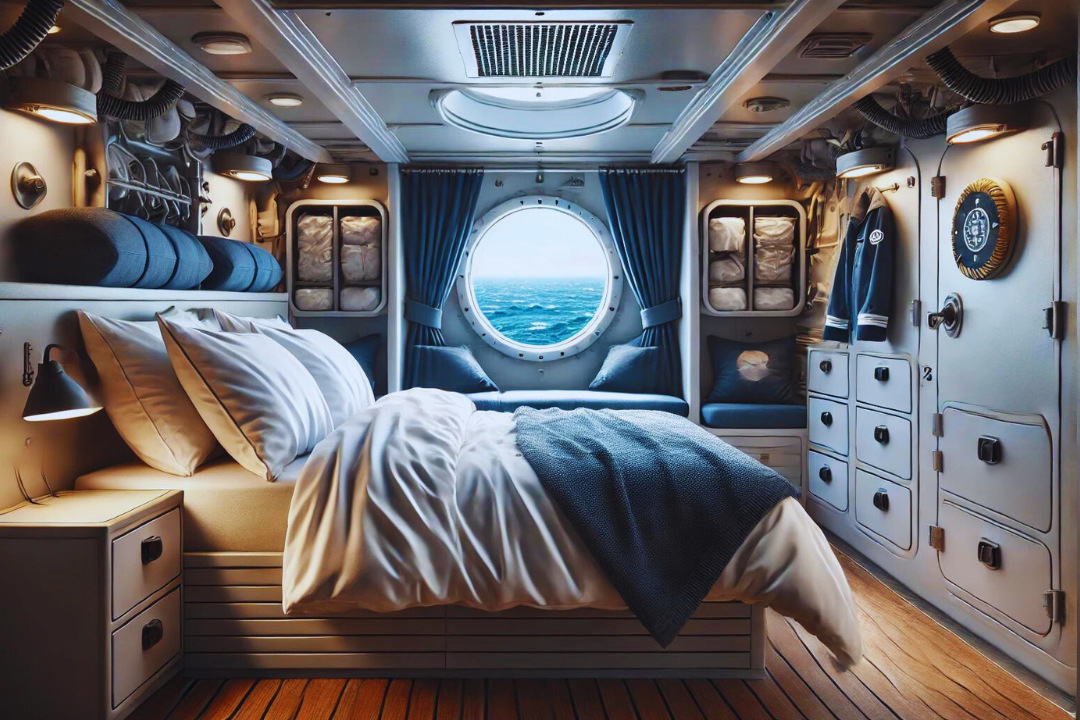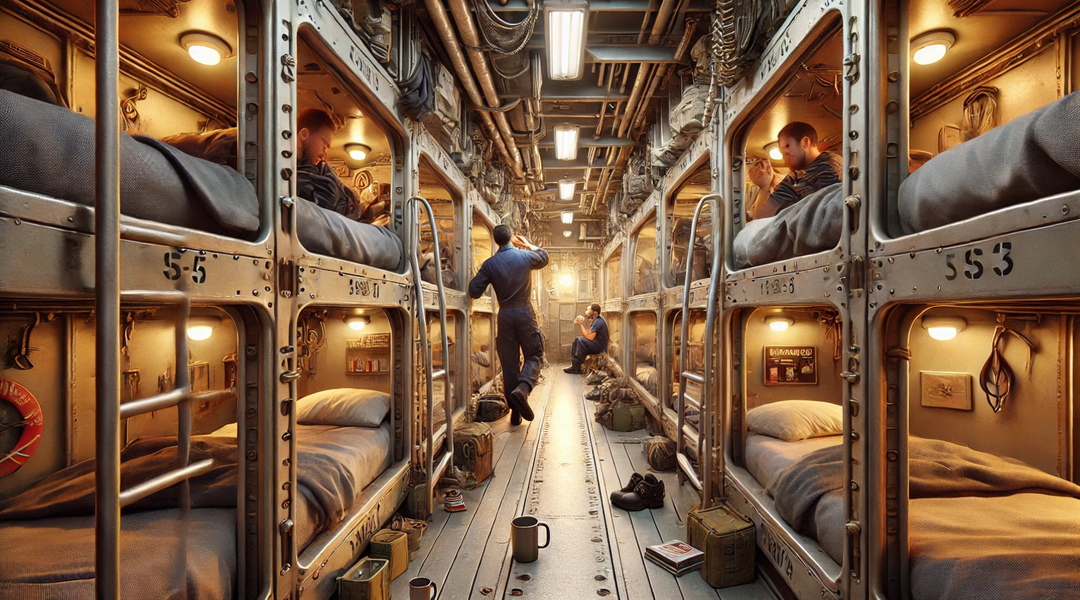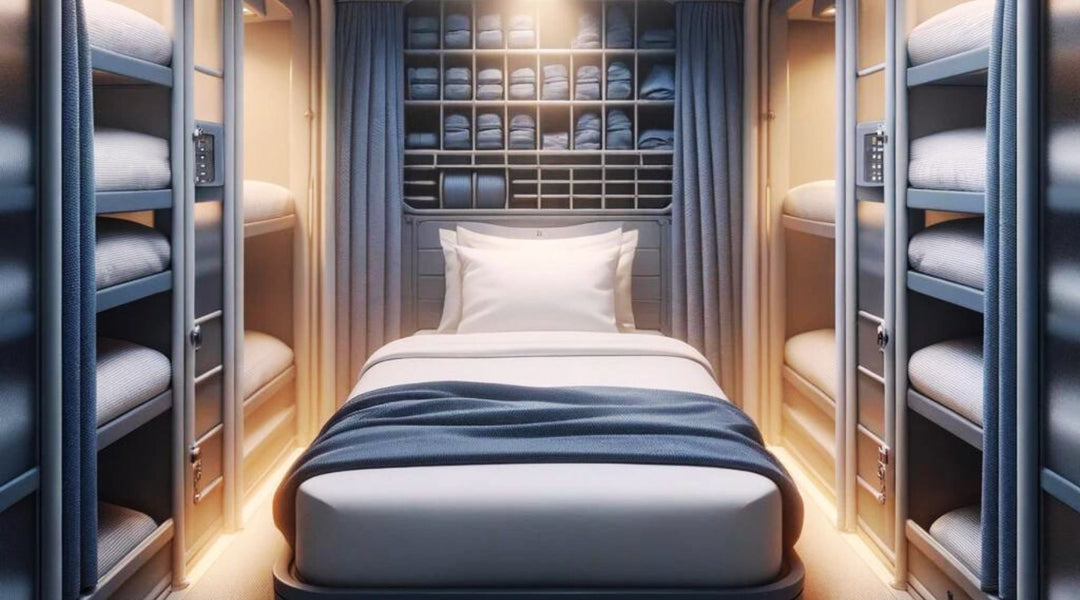Navy Rack Standards: A Guide for Shipboard Safety and Comfort

This specification guide includes US Navy regulations for ship rack mattresses, ship berthing rack sheets, pillowcases, pillows, and ship rack curtains.
Military Bedding Types and Categories
When sailors check in to a ship, they are assigned to a berthing and "rack" (bed) where they will sleep for the duration of their shipboard assignment. Every rack typically includes a "coffin locker", stand-up locker, mattress, and curtains. Along with their rack assignment, Sailors will be issued sheets, a pillow, and a blanket. Some of these items have specific fire-retardant requirements, while others do not. The US Navy distinguishes which berthing items have fire-retardant requirements or specifications. These requirements are largely based on whether berthing items are categorized as "consumable" or "durable" items.
Consumable Goods
Definition: Consumable goods are items that are used up quickly and need to be replaced frequently. These goods have a short lifespan and are typically used once or a few times before they are entirely consumed.
Examples in a Military Context:
- Food and beverages: Meals Ready-to-Eat (MREs), field rations.
- Medical supplies: Bandages, medications, syringes.
- Office supplies: Paper, pens, printer ink.
- Cleaning supplies: Detergents, disinfectants.
- Bedding supplies: Sheets, pillowcases.
Characteristics:
- Short-term use: Designed for immediate or short-term usage.
- Frequent replacement: Need to be replaced regularly.
- Low-cost per unit: Generally cheaper per item compared to durable goods.
Durable Goods
Definition: Durable goods are items that have a long lifespan and are not consumed quickly. These goods are used repeatedly over an extended period and do not need to be replaced frequently.
Examples in a Military Context:
- Vehicles: Tanks, trucks, jeeps.
- Weapons: Rifles, pistols, missile launchers.
- Equipment: Radios, night vision goggles, GPS devices.
- Furniture: Desks, chairs, filing cabinets.
- Bedding supplies: Mattresses, curtains, pillows.
Characteristics:
- Long-term use: Designed for extended usage and longevity.
- Infrequent replacement: Do not need to be replaced often.
- High-cost per unit: Generally more expensive per item compared to consumable goods.
Key Differences:
- Lifespan: Consumable goods have a short lifespan, whereas durable goods have a long lifespan.
- Frequency of Purchase: Consumable goods are purchased frequently due to their short-term nature, while durable goods are purchased less often due to their durability.
- Cost: Consumable goods are typically low-cost per unit, whereas durable goods are higher-cost per unit.
- Usage: Consumable goods are used up and need regular replenishment, while durable goods are used repeatedly over a longer period.
Consumable goods are items that the military needs to replace regularly due to their short-term usage, whereas durable goods are items that are used over a long period and do not need frequent replacement. Understanding these categories helps the military manage resources efficiently, ensuring that both immediate and long-term needs are met.
Since sheets and pillowcases are considered consumable items, they do not have any fire-retardant requirements. US military personnel and procurement officers have a lot of flexibility when it comes to the type of fabric authorized for use aboard US Naval and Coast Guard vessels. Items like mattresses, curtains, and pillows are considered durable goods and do have specific fire-retardant requirements.
Policy Differences Between Ships
These regulations are the minimum standards for all vessels across the US Naval Fleet. Individual ships, Commanding Officers (CO), Executive Officers (XO) and Command Master Chiefs (CMC) can have stricter policies when it comes to berthing requirements and berthing conformity. Most Ship CO's, XO's, and CMC's have relaxed berthing policies and allow Sailors some freedom with their rack/beds choices, as long as those choices meet the minimum Navy Standards.
Impact of Bedding on Morale and Comfort
Quality bedding has a significant impact on morale and overall well-being, particularly in naval environments where sailors spend a considerable portion of their time in their racks. Comfortable and supportive bedding can contribute to better sleep quality, which in turn leads to improved mental health and cognitive function. The right bedding materials, such as breathable fabrics like cotton, can help regulate body temperature and wick away moisture, creating an optimal sleep environment that promotes relaxation and restfulness. This is especially important in the confined spaces of naval vessels, where proper rest is crucial for maintaining alertness and performance. Additionally, allowing some personalization of bedding, such as the use of solid color sheets during normal operations, can boost morale by giving sailors a sense of comfort and individuality in their living spaces.
Fleet Sheets Meets and Exceeds Navy Regulations
Ensuring Safety and Comfort on Navy Vessels
The bedding on Navy ships and submarines plays a crucial role in ensuring the comfort and safety of sailors. Fire-retardant requirements for durable goods like mattresses and curtains are vital in preventing and mitigating fire hazards aboard ships. By distinguishing between consumable and durable goods, the Navy can effectively allocate resources, ensuring that sailors have the necessary supplies to maintain both their well-being and the ship's operational readiness.
References for applicable Naval Shipboard Regulations:
- MIL-STD-1623E - Fire Performance Requirements - Naval Shipboard Use
- MIL-PRF-20092M - Mattresses
- MIL-PRF-32489 - Pillows
- MIL-C-24500A - Curtains
- CCC-C-430F - Sheets and Pillowcases
Conclusion
Understanding the specifications and categories of Navy bedding is essential for maintaining a safe and comfortable living environment for sailors. By adhering to regulations and properly managing resources, the Navy ensures that both consumable and durable goods meet the needs of their personnel, supporting their mission and overall effectiveness.
By providing clear guidelines and maintaining high standards for bedding materials, the Navy upholds its commitment to the safety and comfort of its sailors, allowing them to perform their duties effectively while at sea.
Questions:
Let us know below if you have any questions, comments, or experiences from your ship or chain of command.







Leave a comment